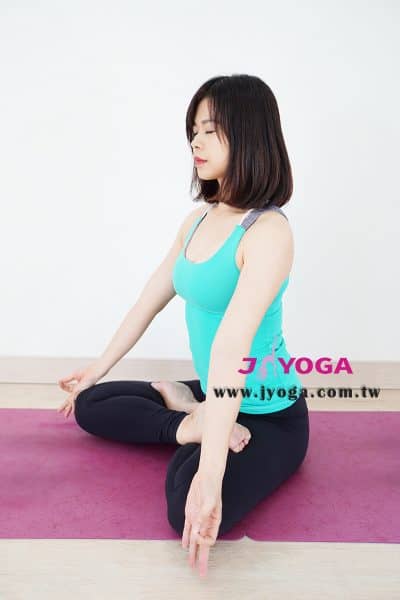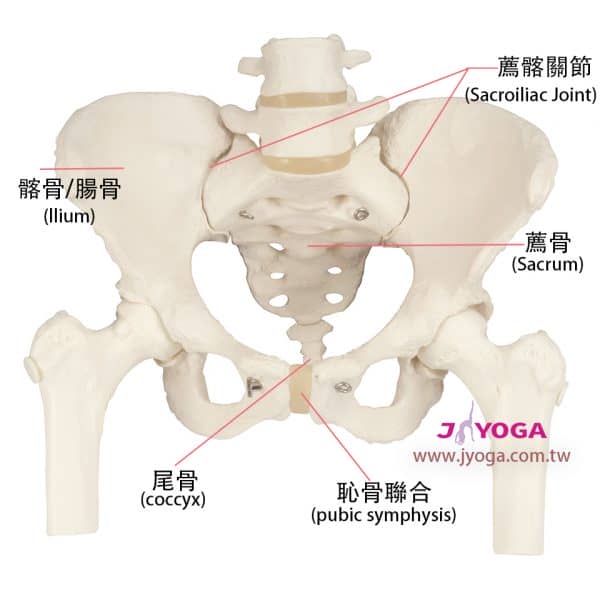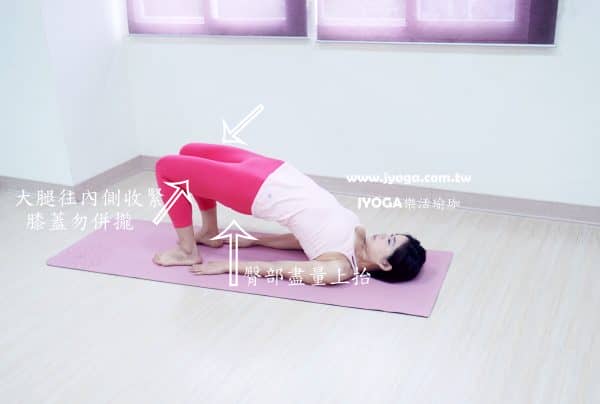前幾天的國外新聞-BBC News 英國物理治療師-Benoy Matthews 提出
他看到已有4-5位瑜珈老師出現髖關節的問題,有的還面臨置換髖關節,年紀也很輕,
落在40歲左右,深入了解的背後發覺有些老師對於生理與解剖的組織並不甚了解,
也反映這些老師在培訓時,拿到證照後但並不清楚這些知識。(選課重要,老師更是重要)
髖部在不當的擠壓下是會受傷的,應該要了解自己的能力範圍下,安全下的進行練習。
他是認同瑜珈的好處,可以改善身體的痠痛、增加柔軟度、強化肌力、保持心靈上的平衡等等,
但絕對要懂得尊重身體的極限與感覺,身體產生疼痛時就應該回到身體舒適的位置,避免不適當的
擠壓。
以上是文中要文簡述
(再次強調安全練習很重要,瑜珈和雜耍、體操是不同。)
From BBC News 3 November 2019
Yoga teachers ‘risking serious hip problems’
Yoga’s popularity does not look like it will wane any time soon.
Its physical benefits for flexibility and balance, as well as its spiritual connection,
mean it’s practised by millions across the world.
And that means a need for more and more yoga teachers.
But now, there is a warning they may be putting their own hip health at risk.
Benoy Matthews, a leading UK-based physiotherapist, warns he is seeing increasing
numbers of yoga teachers with serious hip problems – many of whom require surgery
– becausethey are pushing their bodies too hard.
Mr Matthews, a specialist hip and knee physiotherapist and member of the Chartered
Society of Physiotherapists, says he sees four to five yoga teachers a month.
He says the problem lies in people repeatedly pushing their bodies into
“prescribed” positions, when their physiology prevents it.
About half of the teachers he sees simply need advice on how to moderate
the “prescribed” yoga positions, so as not to put too much stress on their joints.
But those with more advanced problems need medical treatment
and surgery – including total hip replacements.
- Yoga ‘helps my Irritable Bowel Syndrome’
- Yoga sessions ‘could improve golf swing’
- Andy Murray’s ‘life-changing’ hip surgery has left him pain-free
“People confuse stiffness and pain,” he says. “If there is a pinching or blocking
feeling in the groin, it shouldn’t be ignored. You have to know your limits.”
Mr Matthews has specialised in hips and knees for the last eight of his 22 years
as a physio.
He says it can be easy for yoga practitioners to mistake joint pain, which means
they should stop the movement, for stiffness, which they should push through.
“We all know about the health benefits of yoga – I practise it myself,” he says.
“But, like anything, it can cause injury. We can’t put it on a pedestal.
“I don’t want to denounce yoga, after all it’s been going for thousands of years.
But you have to understand yourself.”
Mr Matthews says the problem often boils down to how a person’s hips are
formed and how flexible they are.
“What’s achievable for one might not be achievable for others,” he says.
“People tend to do the same set positions, rather than what’s achievable for them.
“Ego might mean them trying to take a position ‘all the way’ to the end
when they should just stop where it’s comfortable.
“Just because the person next to you can reach all the way doesn’t mean
it’s necessary, or desirable, to do the same.”
‘Mix it up’
Mr Matthews says the amount of yoga teachers do, as well as the fact they
might not be doing any other kind of exercise, can explain the problems that develop.
“They might be doing yoga six days a week and think that’s enough,
without doing any other kind of exercise, like cardio or cross training,” he says.
“It’s like anything. If you do the same thing again and again,
there can be problems. You need to mix it up in terms of the kind of exercise you do.
“The yoga teachers I’m seeing are young – 40, 42.
“If they come limping and can’t walk more than 10m [33ft], say,
there’s no amount of physio that can help them. If it’s two years in,
even the best physio can’t do anything.
Sometimes they can have keyhole surgery (hip arthroscopy), or it’s a replacement.
Mr Matthews suggests new yoga teachers should be assessed. “You could see
what mobility they have and what their body is allowing them to do,” he says.
Natalie Gartshore has been a yoga teacher for 16 years, She thinks the popularity
of yoga means it’s effectively a victim of its own success.
“I don’t think you’re told very much when you’re training as a teacher
about physiology or anatomy,” she says. “There is an overuse issue.
“If you got people en masse taking up ballet, you would get the same results.”
Natalie, now 45, tore the cartilage in her hip five years ago.
She now makes sure she manages her class workload and doesn’t work weekends.
But she says it’s hard for newly qualified teachers to do the same.
“They’ll be doing five classes a day, running around, working weekends,” she says.
The British Wheel of Yoga is approved by Sports England, as the practice’s governing body.
Wendy Haring, its chair of education, says: “It’s probably true in some schools of yoga,
where people hold poses for a long time without modification, that’s when there
are problems.”
But learning about anatomy and physiology is a “major part” of BWP-approved courses.
“We would teach people how to modify poses,” Mrs Haring says.
She adds though, people teaching yoga do need to take care and advises anyone
wanting to train to make sure their courses are Ofqual-approved.
Pip White, professional adviser at the Chartered Society of Physiotherapy,
says: “Yoga is a fantastic activity for people to do, with lots of benefits for
your health and general wellbeing.
“However, as with any form of exercise, it’s important to do it safely and
in this case, also understanding your own limits, as we are all built differently.
“Yoga is not about being in competition with anyone else. If you stay
aware of your abilities and practise within your own limits, you will gain
all the great benefits this practice has to offer.”
任何運動在錯誤練習下都會有運動傷害發生,瑜珈的練習跟其他運動不同的地方在於停留時,
會請練習者觀察此刻身體的狀況、尊重身體,如果有任何不適一定要立即停止回到修復的姿勢。
“正確”的練習瑜珈是會為身體帶來益處的,尤其瑜珈的腹式呼吸練習可以改善睡眠障礙問題
(先預告…此內容會出現在個人第三本著作)、可以抗癌、改善自律神經失調、孕婦練習可以為
寶寶帶來更多的養分和如何搭配拉梅茲呼吸出力、精神壓力也可以透過呼吸釋放等等,
呼吸的練習可以參考個人第二本書-滾筒瑜伽舒筋瘦身全書,第三本著作也有再增添一些
呼吸練習法。
腰與髖要避免不當的擠壓,老師也要懂得察覺學員的狀態,在”安全”下指導動作,大家都知道
要開髖,目的是要加強髖部的穩定性和柔軟性,但過度極限的開髖就會出現報導中的髖部受傷的
風險,練習瑜珈的進階動作時,老師要懂得給予變換→知道瑜珈體位法並不是一昧適用所有的
人,而是當課堂中發現有學員不適合此體式時,懂得給予變換,安全下練習~
如果學員有出現髖部問題時,該如何強化與改善又是另一個重點。
膝關節-髖關節-腰部是息息相關,當膝蓋出現問題,髖部就默默代償,腰部出現問題,髖部也同樣
扮演此角色,就這默默的代償下,髖部出現了問題,除了會行走困難,影響生活品質外,也會影響
心理層面。
尤以孕婦在懷孕時,因為鬆弛素的關係讓它更靈活但是會不穩定,支撐力降低,加上胎兒慢慢
變大,此時孕婦的腹部的肌肉需要容納變大的子宮,伸展狀態超越正規,此時下背部就必須負
擔更多的重量、壓力來維持身體姿勢,就產生疼痛和影響。
你以為只有孕婦會這樣嗎?錯……..
長期的姿勢不良(例如:翹二郎腿)、搬重物、跌倒外傷,都有可能造成
薦髂關節和周邊的韌帶損傷,看到著有發現到嗎?很多的身體病痛幾乎來自於
日常生活中的”長期姿勢不良“,有些人會去找整脊或復健,會發現調整的動作很類似
瑜珈的動作,但回到家後不良姿勢未糾正、未規律運動,問題的源頭還是在阿~
保健從日常生活做起!!
另外如果懷孕前就有腰痛問題,懷孕時是會加重不適的,改善下背痛的練習,這時就派上用場了~
生完後媽媽最擔心也是產期最常問的問題:生完臀部會變大,該如何恢復呢?
綁束腹帶有沒有用呢?如果要綁的話該如何使用呢?產後可以做哪些動作幫助骨盆恢復呢?
(來上課會給你正解…. :lol: )
在髖關節的強化上可用外轉、內收、訓練臀肌的方式進行,這樣的練習也可以改
善梨狀肌症候群,有哪些動作可以改善?如何知道自己是否有髖關節問題呢?
來教室報名練習吧~ :lol:
這裡可以提供一個大家最知道的動作-橋式
它可是可以強化下背部、臀肌、骨盆底肌群、大腿前側肌群、改善產後漏尿等等問題。
如何做請參考此篇文章→瑜珈教學128-凱格爾運動-橋式
另外髖部、腰部有問題者在練習鴿子式,也是有些限制,該如何安全的練習也是老師必須知道
的一環,說了這麼多,就是要了解”安全”、”尊重自己的身體”、”正確”的練習瑜珈,必會感
受瑜珈帶來的益處。
當身體部位出現毛病,就醫之後,醫師最終也會建議、鼓勵運動,可讓身體細胞更健康,
但也要注意不是運動時間越久越好,剛好最好,強度不是越高越好,適合自己最好。
不動最不好~


